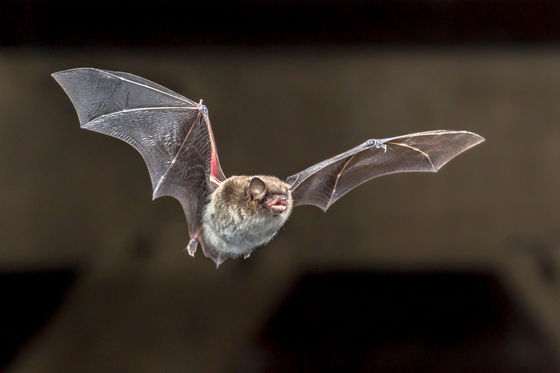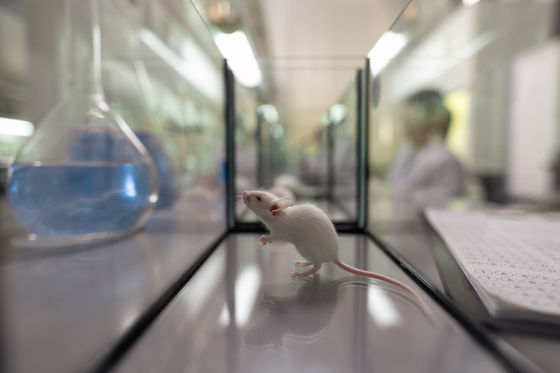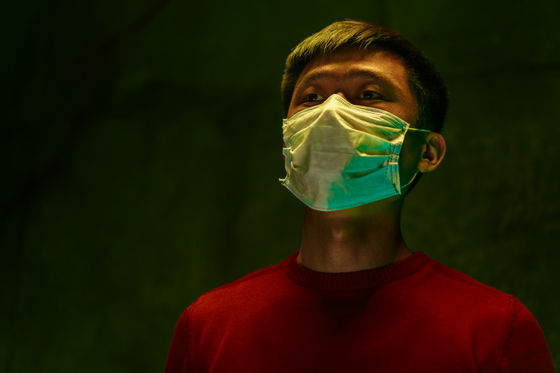It turns out that experiments to mutate dangerous coronaviruses were conducted at the ``Wuhan Institute of Virology'' just before the pandemic

Regarding the origin of the new coronavirus (SARS-CoV-2) discovered in 2019, opinions were divided even at the time of writing the article, especially in Wuhan, China, where the new coronavirus infection (COVID-19) was first confirmed. A United Nations investigation into the 'artificial theory' that it leaked from a laboratory
What really went on inside the Wuhan lab weeks before Covid erupted
https://www.thetimes.co.uk/article/inside-wuhan-lab-covid-pandemic-china-america-qhjwwwvm0
The Wuhan Institute of Virology began full-scale research on coronaviruses after the outbreak of the SARS coronavirus in 2003. Beginning with a severe respiratory infection among farmers in Guangdong province, SARS, which infected 8,000 people and killed 774 in 29 countries around the world, sparked the need for vaccines to combat such viruses. is now recognized.
At this time, Mr. Shi Zhenli , an epidemiologist at the Wuhan Institute of Virology, was tasked with finding out how SARS occurred. After spotting a bat known to be associated with various deadly viruses, including rabies, Ishi scoured caves for samples of bat droppings that earned him the nickname 'Batwoman.' became.

The research team that embarked on the experiment of the SARS virus found in this way will be joined by Peter Dazak, a zoologist from the UK and a representative of the animal welfare group EcoHealth Alliance. Animal welfare groups that protect pets and endangered animals struggled to raise funds, but Mr. Dasak raised $18 million in five years from the US government's research program '
In 2012, the research team succeeded in discovering a new virus in a cave in Yunnan, southern China. The virus, which is the closest to SARS discovered so far, was named 'WIV1' after the Wuhan Institute of Virology, and experiments have shown that it can also infect human cells. was proven in
However, the research team, who was unable to culture the second SARS-like virus 'SHC014' found in the cave, contacted Ralph Barrick, a veteran virologist at the University of North Carolina. Mr. Barrick is a leading researcher who uses a technique called 'gain of function' to increase the infectivity of coronaviruses. We are also experts in creating.
After receiving data on the gene sequence of 'SHC014' from the Wuhan Institute of Virology, Barrick created a new mutant by inserting the gene for the 'SHC014' spike into a copy of the original SARS virus created in the lab, creating a human We have started an experiment to test it on a mouse.

On the other hand, in May 2014, the EcoHealth Alliance succeeded in obtaining a grant of 3.7 million dollars (about 510 million yen) from the National Institutes of Health (NIH), of which 500,000 dollars (about 70 million dollars) Yen) or more was used for the equipment of the Wuhan Institute of Virology, and another $ 130,000 (about 18 million yen) was used for the salaries and welfare of Mr. Shi and his assistants.
However, soon after, a problem arises that makes it difficult to continue the research. The Obama administration announced that it would freeze all gain-of-function experiments that could reasonably be expected to increase the infectivity or lethality of pathogens. The subject also included the SARS research that Barrick et al.
After that, Mr. Barrick and Mr. Ishi, who continued their research using the loophole of 'emergency and safe cases' as exceptions, jointly published a research paper in November 2015. This research, which revealed that a virus that fused a copy of SARS and 'SHC014' caused severe lung damage in humanized mice and was also resistant to the SARS vaccine, will cause a big ripple.
For example, Simon Wayne Hobson, a virologist at the Pasteur Institute in Paris, warned that 'if the virus were released, no one would be able to predict how it would spread.'
When Mr. Barrick left in response to this reaction, the Wuhan Institute of Virology began original research using Mr. Barrick's technology and created two new mutants that fused `` WIV1 '' with another virus. This is stated in the report of research contents up to May 2016, which Mr. Dazak submitted to the US government. The report also revealed that the Wuhan Institute of Virology had planned to experiment with combining bat-derived viruses with camel-derived
The US government warned that the research team's expansion to MERS would violate prohibited gain-of-function experiments, but Dazak said, ``Because the MERS experiment is unlikely to increase the virulence of the virus. It's not a gain-of-function experiment.' The conflict eventually settled on a compromise: if a new mutant virus that replicated 10 times faster than the natural virus was created, work would stop and the US authorities would be notified.

According to Shi's paper, the research team had attempted to create eight SARS-like coronavirus mutants by 2017, two of which were found to infect human cells. matter. However, most of this research was conducted at the Wuhan Institute of Virology's
By this time, research at the Wuhan Institute of Virology had become even more dangerous, and the research team was conducting experiments to fuse the SARS-like coronavirus with `` WIV1 '' to infect humanized mice. In particular, the mutant virus that fused 'WIV1' and 'SHC014' killed 75% of mice, and was three times more lethal than the original 'WIV1'.
The study was funded by the EcoHealth Alliance, but the report Dazak submitted in April 2018 did not mention the Wuhan Institute of Virology experiments. Also, in a grant program renewal application that Daszak submitted to the NIH later that year, it said that the mice had 'mild SARS-like clinical symptoms,' although in reality humans were not. 6 out of 8 mice were dead.

Aiming to further research, the Wuhan Institute of Virology pitched the research to the Defense Advanced Research Projects Agency (DARPA) to draw the next round of funding from the United States. An application titled 'Defuse' proposed an experiment by the Wuhan Institute of Virology to fuse 'WIV1' and 'SHC014', but DARPA refused funding.
One planned experiment involved inserting a 'furin cleavage site', a genetic sequence that enhances the virus's infectivity, into the pathogen. Daszak and the Wuhan Institute of Virology say the study was never done, but The Sunday Times reported that ``SARS-CoV-2, discovered in 2019, was the first SARS-like coronavirus to have a ``furin cleavage site. It is worth noting that he had
So far, this is the ostensible research reported by US funders, but investigators speculate that the Wuhan Institute of Virology was secretly working on a behind-the-scenes project even for Mr. Daszak. The project dates back to 2012, when the Wuhan Institute of Virology was exterminating bats inhabiting an abandoned mine in Mojiang Hani Autonomous County when six men developed high fever, coughing and pneumonia symptoms.
The Wuhan Institute of Virology, which spent four years examining the mine, collected 1,300 samples from local bats and found 293 coronaviruses. Mr. Ishi, who discovered the existence of a virus derived from the SARS lineage, named the virus 'RaBtCoV / 4991' in the paper announcing it. However, the Wuhan Institute of Virology did not disclose that the virus killed 3 out of 6 people, and renamed the virus 'RaTG13'. This is allegedly to prevent the virus from being easily associated with the mine in which it was found.
This matter is summarized in the article below.
In 2013, the Wuhan Institute of Virology confirmed a virus that closely resembled the new coronavirus and killed three people-GIGAZINE

State Department investigators investigating the origin of COVID-19 released a report in early 2021 based on information intercepted by US intelligence agencies. There, researchers at the Wuhan Institute of Virology were conducting experiments with 'RaTG13' collected from mines, and that just before the pandemic, confidential military research, including animal experiments, was being conducted at the Wuhan Institute of Virology. 2 points are noted.
Dangerous experiments with the SARS virus found in the cave were also secretly conducted with RaTG13 and similar viruses found in the same location, according to three investigators interviewed by The Sunday Times. About. One investigator said, “They were working with nine different SARS-CoV-2 variants. I do,' he said.
Investigators believe one of the reasons these studies go unseen is that behind-the-scenes projects were funded by the Chinese military. ``Despite its appearance as a civilian agency, the United States has determined that the Wuhan Institute of Virology has collaborated with the Chinese military on papers and secret projects,'' the investigators said in the report.

According to one investigator, secret experiments of 'RaTG13' conducted with military funds began in 2016. From around this time, the Wuhan Institute of Virology no longer publishes its research, and almost no information about the new coronavirus is disclosed. The influence of the military can only be seen in the fact that the military scientists named in the paper are said to work at the Beijing Institute of Microbiology and Epidemiology, which is home to the military medical school.
Investigators believe the Chinese military aided the research at the Wuhan Institute of Virology with the intention of using the virus as a bioweapon. The rationale is that in February 2020, just over a month after the virus surfaced, a military researcher named Zhou Yusen patented a COVID-19 vaccine with surprising speed.
In an investigative report on the origins of COVID-19, released in April 2023, Robert Kaledock, head of the U.S. vaccine development program, said, ``Zhou and his team are expected to survive at least as soon as the pandemic begins. We should have started vaccine development in November 2019.' However, despite such a great achievement, Zhou's treatment was small when he died at the age of 54 in May 2020, and the Chinese media only listed 'deceased' in brackets after his name. . An eyewitness said Zhou fell from the roof of a Wuhan laboratory, but this has not been confirmed.
Investigators also found wiretap records that said three researchers who were conducting coronavirus gain-of-function experiments in a level 3 lab at the Wuhan Institute of Virology collapsed from coronavirus symptoms in mid-November 2019. I also got Since then, one member of the researcher's family has died.
One researcher said, 'Since the three researchers were working on advanced coronavirus research in Shi's lab, we can confidently say that the virus that caused them to collapse was COVID-19. They're in their 30s and 40s, and they're trained biologists.

Since then, many researchers outside China have tried to investigate, but the full picture of the situation remains unknown. British researcher Alice Hughes, an associate professor at the Chinese Academy of Sciences and an expert on bats, who conducted a study to collect samples from the mine in question, was taken in by the police the day after the sample collection and questioned. He said he was time bound. Hughes was prohibited from discussing his research in detail, and was forced to emigrate to Hong Kong as it became difficult to proceed with his research, partly due to surveillance by Chinese authorities.
Hughes told The Sunday Times, 'China is coming to a point where it can say what it wants to be, pick out the data that fits that storyline, and deter the collection of bad data. Yes, I think it's very dangerous.'
Related Posts:
in Note, Posted by log1l_ks






